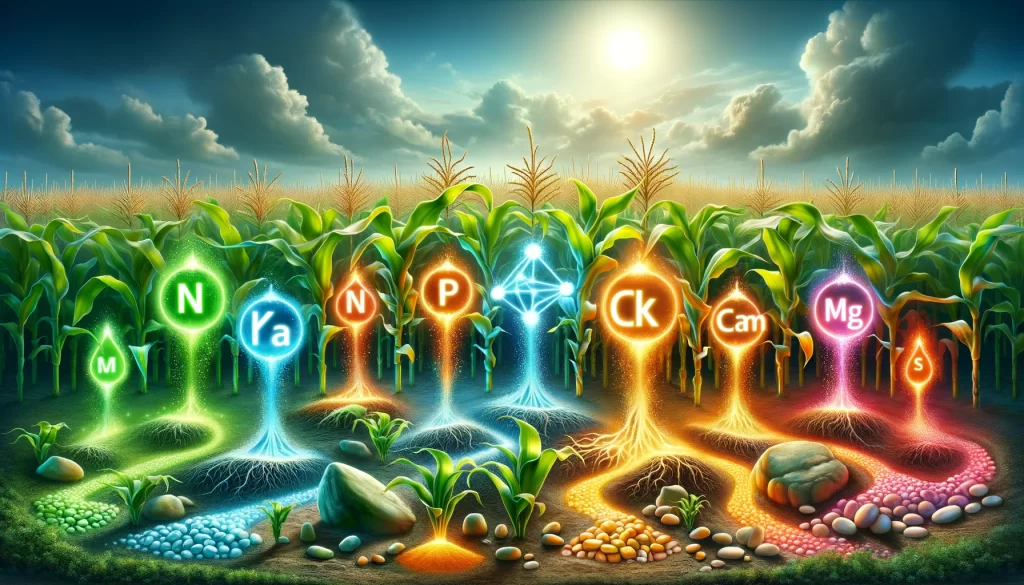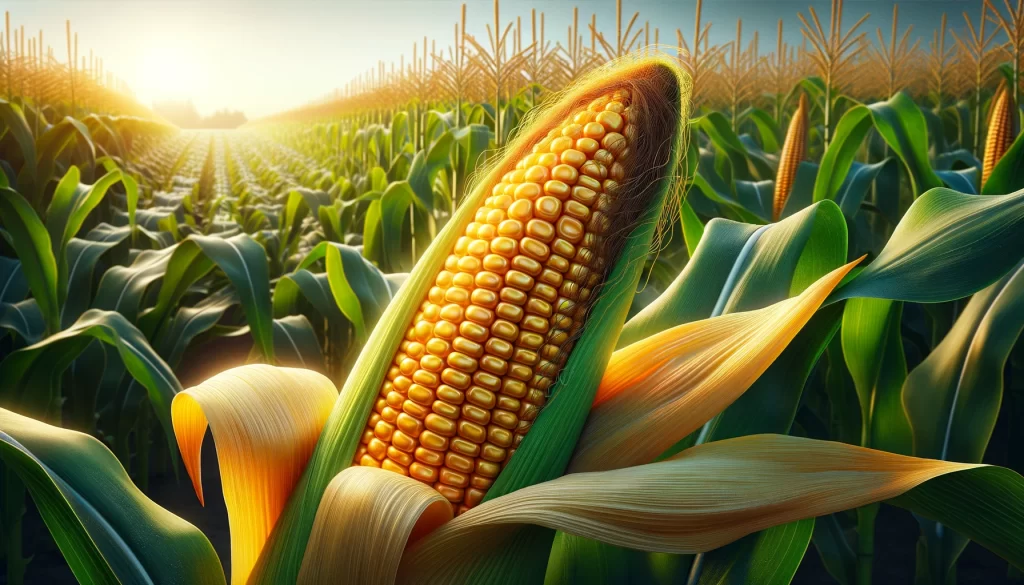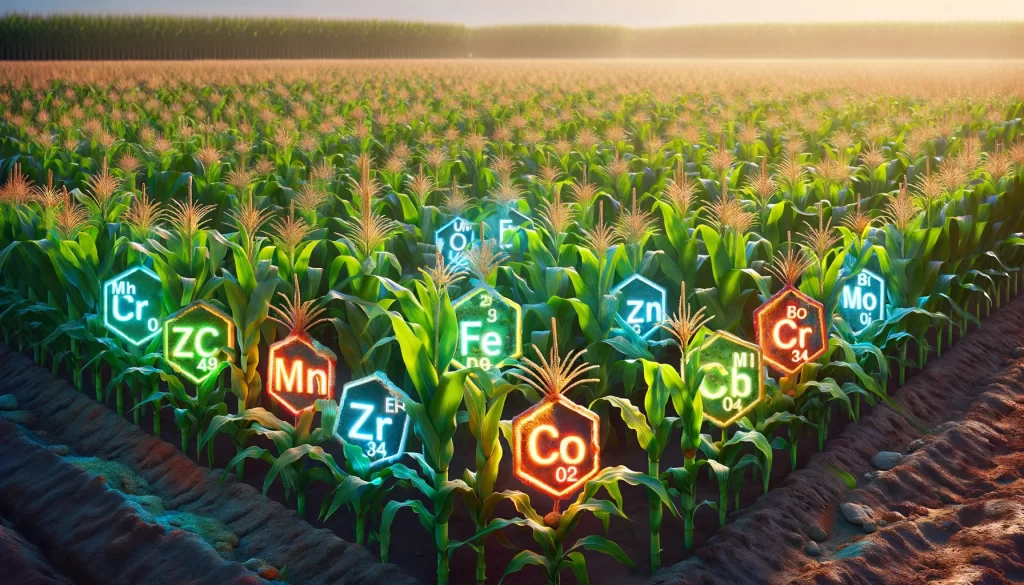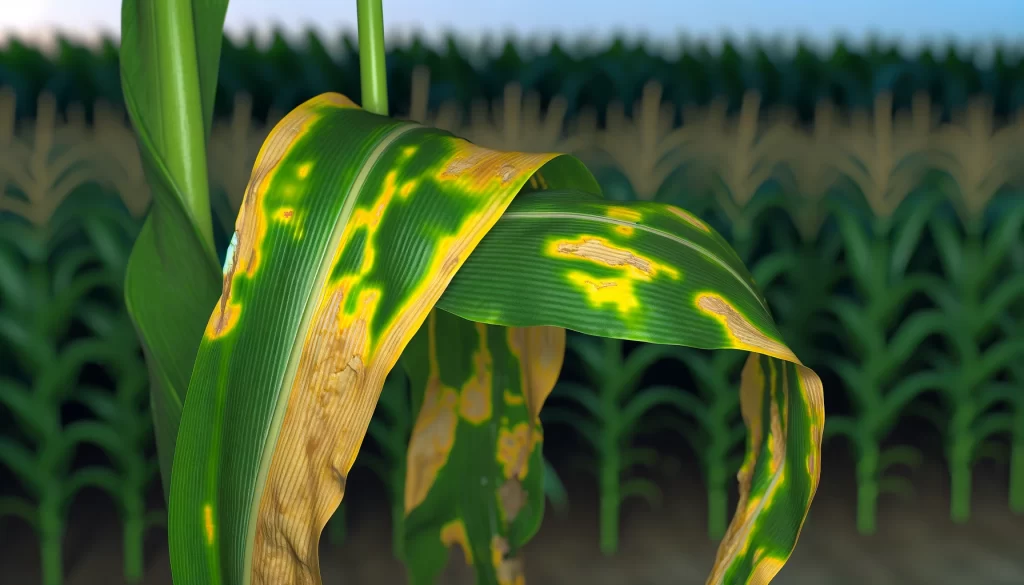One of the main problems affecting corn cultivation is nutritional deficiency.

Nutritional deficiencies in corn can occur when the plant does not receive adequate amounts of one or more essential nutrients for its growth and development. These nutrients are crucial for various physiological functions of the plant, and their absence or scarcity can result in characteristic visual symptoms that can affect crop yield and quality.

Among the essential nutrients needed for corn to perform well are:
Nitrogen, Phosphorus, Potassium, Calcium, Magnesium, Sulfur, Iron, Manganese, Zinc, Copper, Boron, Molybdenum, Chlorine.

Here is a list of symptoms caused by a deficiency of these nutrients:
- Nitrogen (N): Nitrogen deficiency manifests as a general yellowing of older leaves (chlorosis) starting at the leaf edges and progressing towards the central vein, resulting in an inverted “V” appearance. Plants may exhibit slow growth and have fewer ears.
- Phosphorus (P): Phosphorus deficiency is characterized by dark green color on older leaves, followed by reddening or purpling on leaf margins and veins. Plants may show delayed growth, underdeveloped roots, and reduced ear production.
- Potassium (K): Potassium deficiency presents as yellowing and necrosis of the edges of older leaves, which may progress towards the leaf center, resulting in marginal drying. Ears may be smaller and have fewer grains.
- Calcium (Ca): Calcium deficiency can cause necrosis on the tips and edges of young leaves, known as “tip burn.” Ears may show symptoms of necrosis and deformation, and plants may exhibit delayed growth.
- Magnesium (Mg): Magnesium deficiency manifests as interveinal chlorosis on older leaves, where veins remain green while interveinal tissues turn yellow. Affected leaves may become bronzed and show poor growth.
- Sulfur (S): Sulfur deficiency appears as a general yellowing of younger leaves, similar to nitrogen deficiency but without the inverted “V” formation. Plants may exhibit slow growth and have narrow, erect leaves.
- Iron (Fe), Manganese (Mn), Zinc (Zn), Copper (Cu), Boron (B), Molybdenum (Mo), Chlorine (Cl): Micronutrient deficiencies can manifest in various ways, such as chlorosis, necrosis, leaf deformation, and growth delay, depending on the specific nutrient and the severity of the deficiency.

Below is a table of necessary nutrients according to the phenological stage of corn cultivation. It is essential to conduct a soil analysis beforehand to determine the specific fertilization needs of each cornfield and adjust the recommended doses accordingly.
| Phenological Stage | Key Nutrients | Recommended Dose | Application Methods |
|---|---|---|---|
| Soil Preparation | N, P, K, S | According to soil analysis | Incorporation of granular or liquid fertilizers as per soil needs. Adjust quantities based on soil analysis results. |
| Planting | N, P | 50-70 kg/ha of P2O5; 30-50 kg/ha of N | Base fertilization with phosphorus and nitrogen fertilizers according to agronomic recommendations. |
| Germination | N, P | – | Plants obtain nutrients stored in the seed and absorbed from the soil. |
| Seedling Development | N, P, K | According to soil analysis | Foliar fertilization or fertigation if necessary to correct early deficiencies. |
| V4 – V8 | N, P, K | According to soil analysis | Foliar or soil-injected fertilization to meet vegetative growth needs. |
| V12 – V14 | N, P, K, Ca, Mg | According to soil analysis | Supplementary fertilization to promote plant development and ear formation. |
| Flowering (R1) | N, P, K, Mg | According to soil analysis | Foliar or soil-injected fertilization to meet reproductive development needs. |
| Ear Formation (R2) | N, P, K, Ca, Mg, S | According to soil analysis | Foliar or soil-injected fertilization to promote ear development and grain filling. |
| Grain Fill (R3 – R6) | N, P, K, Ca, Mg, S | According to soil analysis | Supplementary fertilization to maintain plant health and support grain filling. |
| Physiological Maturity (R6) | N, P, K | – | Stop fertilization to allow the plant to complete its life cycle. |
It is essential to conduct a soil analysis beforehand to determine the specific fertilization needs of each cornfield and adjust the recommended doses accordingly.
 AgronoBlog – Agriculture Blog
AgronoBlog – Agriculture Blog 